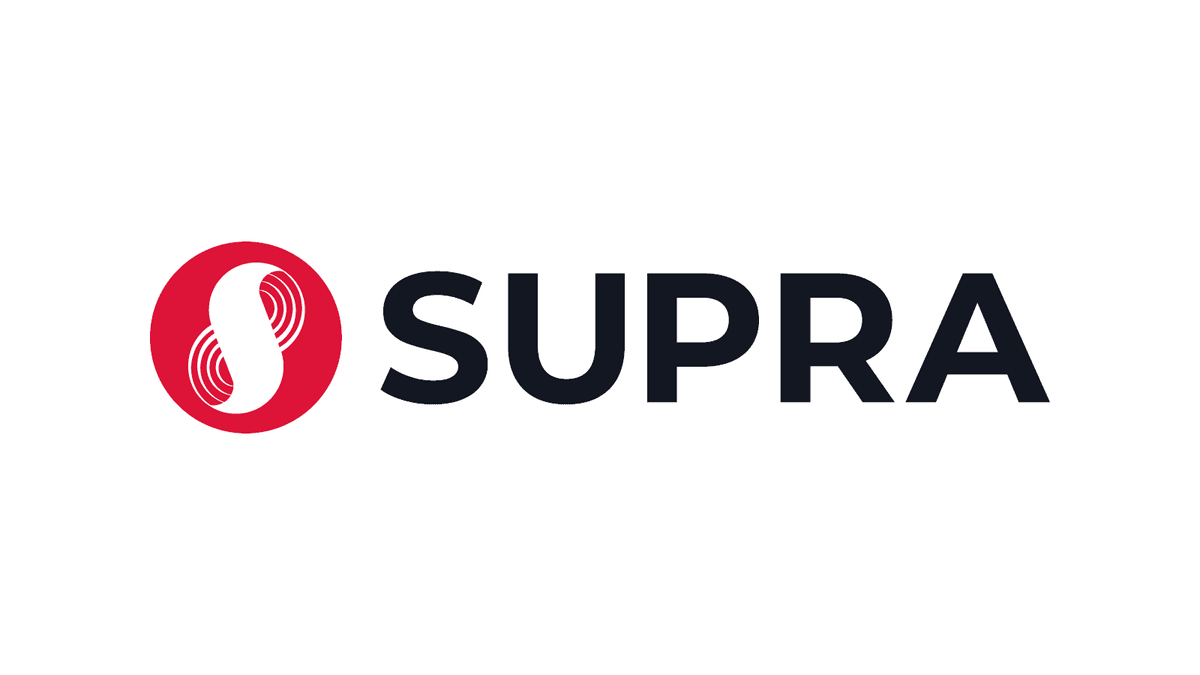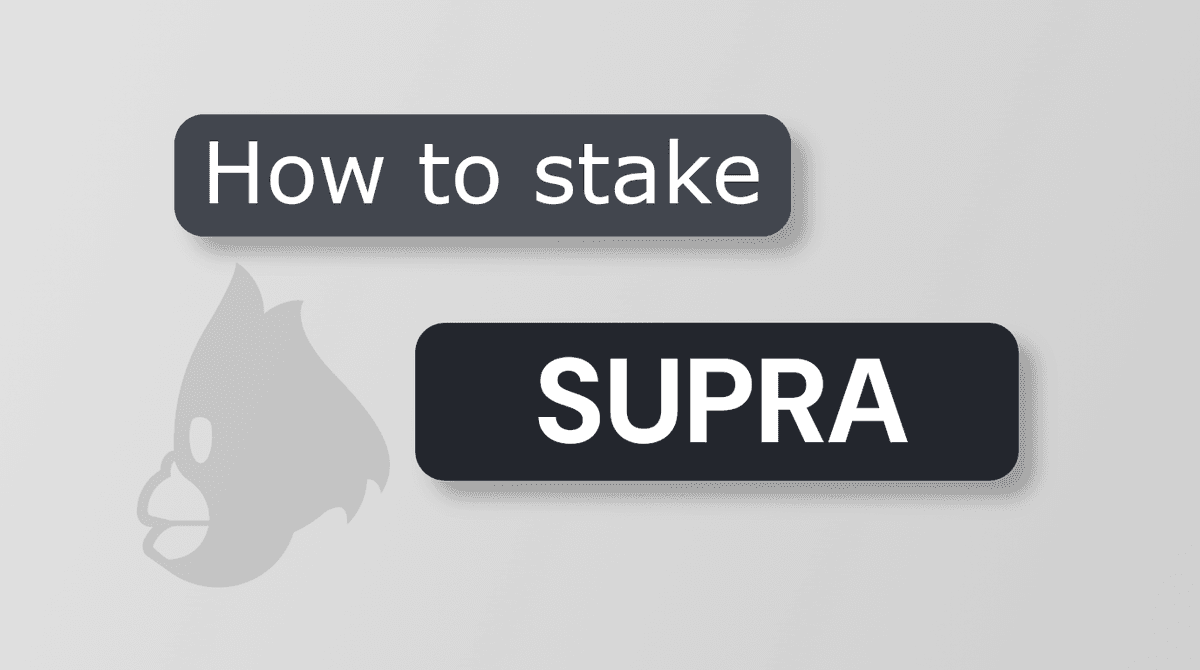Key Takeaways
- Supra's Infrastructure: Supra offers a Layer 1 blockchain with decentralized oracle solutions, dVRF services, and cross-chain messaging for seamless dApp development.
- Performance Advantage: Supra's oracles provide ultra-fast data delivery (0.6-0.9 seconds) and refresh rates of 2-3 seconds, outperforming many competitors.
- Cross-Chain Interoperability: Supra Containers simplify dApp development by enabling efficient cross-chain connections across multiple ecosystems.
- Ecosystem Growth: Supra partners with networks like Ethereum and Avalanche, with 237 partnerships and integrations across 47 main networks in 2023.
- Innovative Consensus: Its Moonshot consensus algorithm ensures low latency, high throughput, and robust security for its native blockchain.
Get more insights about Supra in our Blog post Supra (SUPRA): Explaining the Intricacies of the Supra Network
Understanding Blockchain Oracles and the Challenges of a Fragmented Crypto Landscape
One of the main challenges present in blockchain ecosystems today is the inherently insular design of blockchains and their related frameworks. Depending on use-specificity, oftentimes the key to providing a useful application in this regard is to provide a way of acting on an input from the outside world. However, direct accessibility to off-chain data is a functionality that is not generally provided natively to blockchain systems. Thankfully, many of these issues can be solved through the introduction of blockchain-powered oracle networks.
Remember, an oracle is an application that sources relevant off-chain and on-chain data, parses it, acts upon the information, and submits the relevant result back onto the blockchain, resulting in an environment that aggregates real-world data, allowing for its use at the protocol-level.
In many ways, middleware can be thought of as the glue that connects blockchain networks and larger underlying blockchain ecosystems together. While oracles do solve many of the issues facing blockchain systems and the availability of real-world data, it is important that they are supported by other middleware solutions.
For example, these include data availability (DA) layers, bridges, sidechains, chain abstraction layers, verifiable random function (dVRF) protocols, and other networks, dApps, and protocol types of all shapes and sizes. Most of the above infrastructures (and hundreds of others) are powered by decentralized blockchain oracles in one way or another.
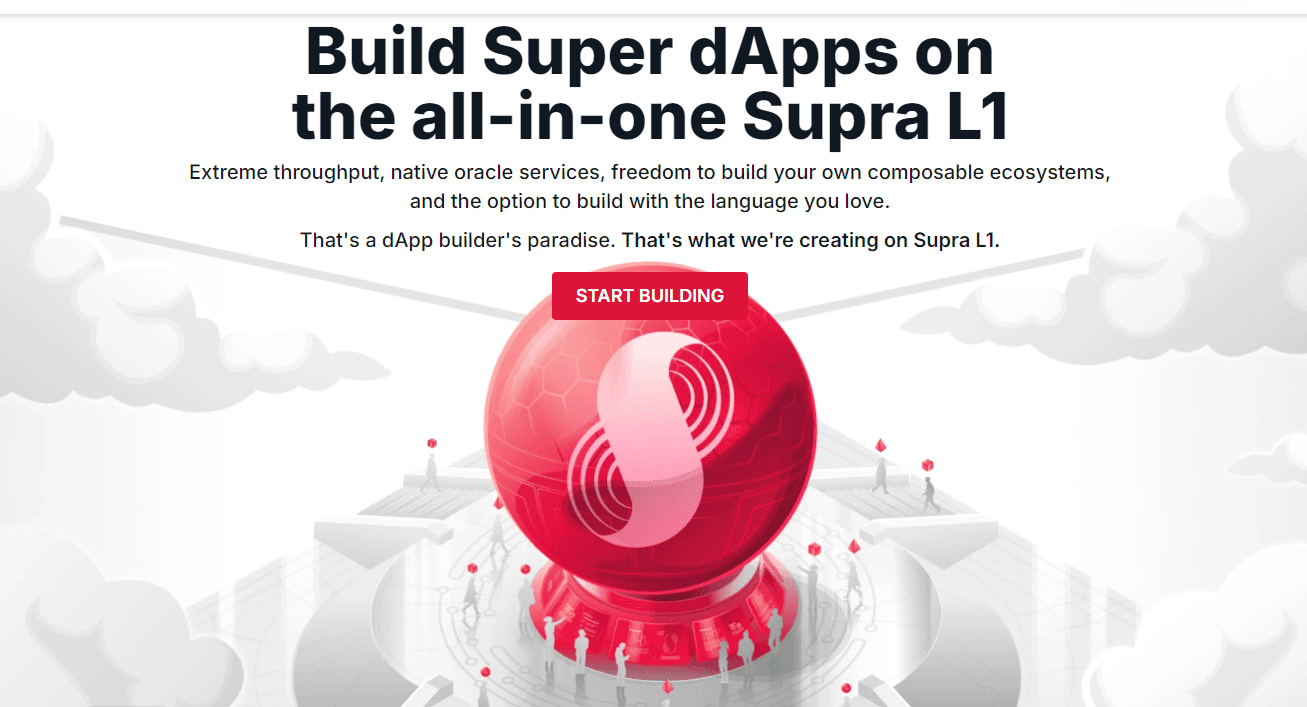
The Supra Oracle and Infrastructure Solution
Supra network is a Layer 1 blockchain built to provide serviceability for dApps by provisioning a decentralized oracle solution, verifiable random function (VRF)-as-a-service, cross-chain messaging services, and numerous additional infrastructure frameworks that are compatible with multiple virtual machine environments. Supra is designed to be a fully vertically integrated infrastructure, providing developers with reliable access to various dApp services required by decentralized applications (dApps).
With one of its primary service offerings being oracles, oracles atop the Supra network are designed to be extremely fast, typically exhibiting a refresh rate of 2-3 seconds and a delivery time of 0.6-0.9 seconds give or take. This compares favorably to competing oracle solutions, many of which are characterized by refresh times of 15 to 20 times longer.
Supra also helps provide a dApp-tailored infrastructure solution via Supra Containers, enabling a seamless user and developer experience for all. Through its various frameworks for dApps and cross-chain, Supra has the potential to become an important infrastructure solution that ties the modern Web3 application ecosystem together.
By providing a comprehensive suite of tools designed from the ground up, Supra facilitates cross-chain interoperability, which is critically important to realize connectivity across networks, protocols, dApps, and the like. The backbone of this solution takes the form of a native Layer 1 blockchain that leverages Supra’s various in-house Moonshot consensus algorithms. Regardless, Supra’s products are not constrained to the native chain and its services can be integrated within any compatible blockchain network, largely because Supra supports several distinct virtual machine environments.
As the foundational paradigm representing their comprehensive consensus and protocol research since 2018, the Supra team developed a multifaceted set of consensus protocols that became known as the Moonshot consensus frameworks.
The Moonshot suite aims to optimize chain-based rotating leader BFT consensus, offering low latencies and high throughput. It is worth noting however, that Moonshot protocols have higher communication complexity than many alternatives that scale linearly, scaling via what is known as a square relationship.
Consequently, a pressure point exists where gains in latency and speed are balanced by increased complexity. That said, the Moonshot protocols have for the most part been shown to outperform consensus frameworks such as Jolteon (a consensus originally developed by the Facebook Diem project and previously known as DiemBFT and AptosBFT) in networks up to 200 nodes.
Supra has worked tirelessly towards creating a vertically integrated ecosystem where Super dApps have access to all core services provided by the network, including as oracles, dVRF solutions, automation services, bridges and more, all within the same blockchain environment.

The Supra Ecosystem
Supra provides oracle and infrastructure support to many of the blockchain industry’s most prominent and well known platforms, protocols, and networks. Some of these include:
- Ethereum: as the industry’s longest-serving smart contract Layer 1, Ethereum officially launched on mainnet in July 2015 and has since pioneered much of the infrastructure that open blockchain systems have become known for across the industry.
- Arbitrum: as blockchain’s largest Ethereum Layer 2, Arbitrum is built to serve as a scalability and computing enhancement platform for the development of L2 rollup chains. Arbitrum is built to address speed, cost, and efficiency challenges, while retaining seamless integration with Ethereum.
- Avalanche: as one of the largest Layer 1 blockchains supported by a constantly evolving ecosystem, Avalanche continues to be a force to be reckoned with in the global blockchain arena.
- Optimism: as the second largest Ethereum Layer 2, Optimism is well-known for its foundational OP Stack infrastructure used by many of the industry's largest Layer 2’s (such as Coinbase’s Base L2, Binance’s OP BNB L2, and others).
- Crypto.com: as a large-scale DeFi and CeFi exchange and wallet-in-one, Crypto.com offers a seamless user experience and numerous products and services, most of which are focused on its staking, exchange, and wallet offerings.
- Coinbase: as the largest centralized exchange in the United States and one of the largest in the world, Coinbase offers dozens of products and services to retail and institutional customers in various market segments.
- Mantle Network: a Layer 2 scaling solution built atop Ethereum, Mantle Network is owned and developed by one of the world’s largest centralized exchanges, Bybit.
The Supra platform also supports OKX, Polygon, BNB Chain, Linea, Injective Protocol, Fantom, and dozens of others. In fact, as of this writing, the Supra ecosystem is represented by 237 various platforms and partnerships of all shapes and sizes. Additionally, in 2023 alone, Supra’s products and services have successfully integrated with 47 main networks and 30 test networks.
Supra Architectural Components
The Supra ecosystem of products and services is made up of a collection of inherently cross-chain solutions and other related offerings. Its key components are not designed to be exclusive to their native L1, nor any other established system such as Ethereum or Solana. Nevertheless, interoperability with other networks is ensured by the Supra Hypernova cross-chain relay protocol and other microservices.
More broadly, some of Supra’s main architectural components/offerings include:
Supra Oracles
Supra’s native oracles are a main selling point for Supra and are built to be cross-chain compatible, while providing a fast and reliable point of data entry onto participating network infrastructure. Of late, Supra oracles have been integrated with numerous market-leading networks such as Arbitrum, Avalanche, Ethereum, and Optimism. As a main element to this model, Supra provides oracle services according to what is known as a Distributed Oracle Agreement, drawn up between Supra and the host network.
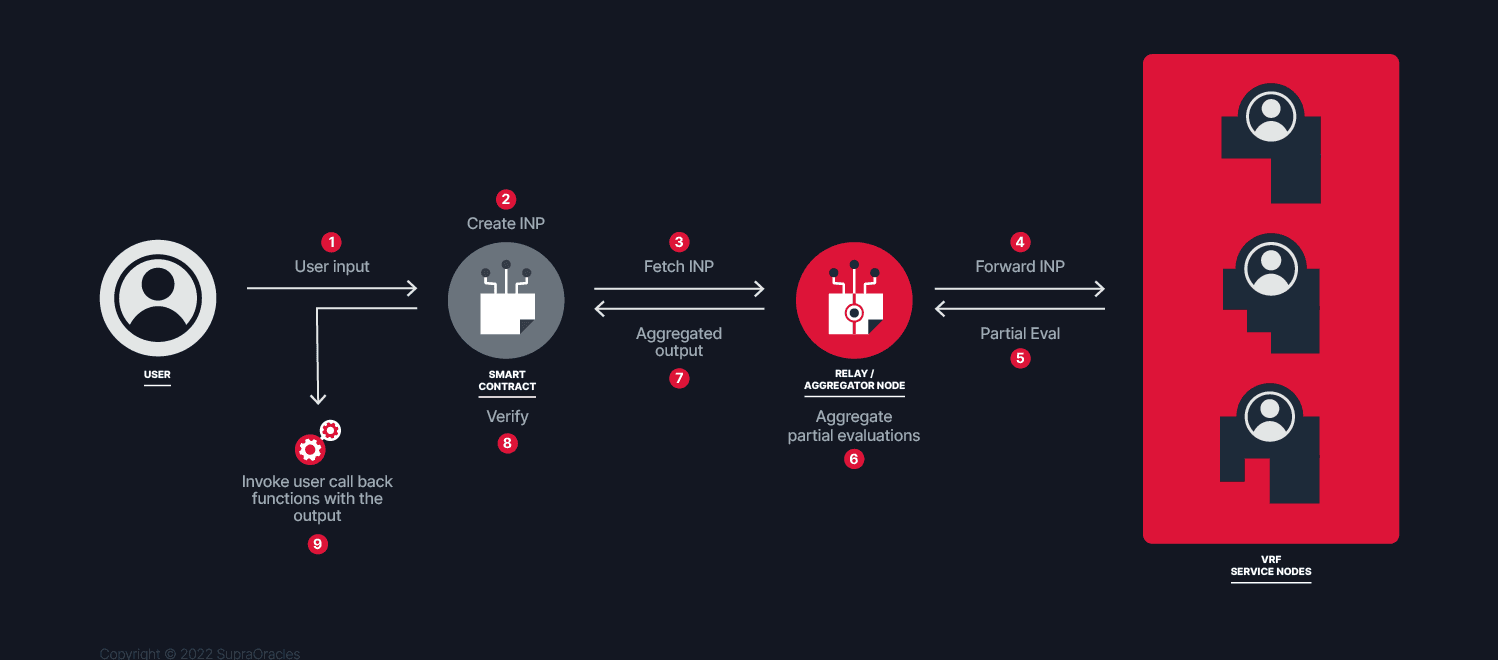
Decentralized Verifiable Random Function (dVRF)
Random functions fill an important role in cryptography and various applications such as those employed by the gaming industry. The presence of verifiable random functions allow developers to create applications that generate randomness, providing proof that the correspondingly generated numbers are in fact legitimate and have not been tampered with.
In reality, it can be extremely challenging to produce a truly random number, so most methods of generating randomness use what are known as pseudo-random functions. These functions rely on a seed that can be sourced locally, e.g. by sampling the state of the machine it’s being run on (taking into consideration system time, mouse position and movement, memory states etc.) or from a centrally provided seed (an approach that is typically suitable for game design).
Pseudo-random functions generally produce a deterministic result from a known seed, meaning it is possible through clever engineering to generate what outwardly seems like a random number, but in reality is a known one. Verifiable random functions let an application source a random number together with proof that it is fairly obtained and suitably random.
This is an important tool generally used to circumvent cheating in gaming applications whereby random elements are integral to the proper functionality of a game. Verifiable randomness is especially important for dApps that rely on randomness to operate as desired. Often, dApps have no central location from where a random number or seed can be sourced, with dVRF providing a robust solution to this problem.
Supra provides a specialized oracle service in the form of a dVRF utility that is integrated with Ethereum (along with DORA) and several other blockchains. Supra’s dVRF solution is offered as a subscription model that allows application providers to manage their own gas fees for end users. This serviceability makes Supra a key provider of essential services to various Web3 ecosystems across the broader crypto sphere.

Supra Containers
Supra Containers are intended as an alternative to developers who seek dedicated blockspace and control over their own token economies and independent governance over their ecosystems. The above requirements have often led developers to build out their own use-customizable Layer 2 platforms. However, this route often introduces multiple hurdles including validator setup, infrastructure retrieval, ecosystem support, and other major requirements related to network bootstrapping processes.
Supra’s container solution offers an attractive alternative to many L2 models by offering a dedicated blockspace that supports access to Supra’s oracle, dVRF, and automation solutions, along with the support of efficient cross-container interactions. At its core, a dApp is a set of interacting smart contracts that act on triggers set by users or other contracts within the dApp’s inner environment.
Supra containers represent logical delimitations of a subset of dApp contracts, and the Supra L1 itself acts as the default container. This means that each container can be individually configured to allow or disallow public smart deployment within its scope. Together with streamlined low-latency cross-container contract deployment, this allows exciting new dApp models to be realized.
Supra History and Founding
Supra was co-founded in Berkeley, California in 2020 by CEO Joshua Tobkin and Chief Business Officer (CBO) Jon Jones as SupraOracles, with the mission to develop a plethora of infrastructure solutions for a wide range of Web3 applications.
Tobkin holds an Economics degree from Drew University and is a well-established entrepreneur with nearly 15 years experience in Software-as-a-Service (SaaS), previously co-founding several technology startups, with his most prominent being Unity Chain, a startup focused on the development of numerous blockchain-agnostic Distributed Key Generation (DKG) systems.
After earning a degree in Political Economy, Global Economy and Political Development from the University of California, Berkeley, Chief Business Officer Jon Jones founded the now-defunct Taiwan-based blockchain consultancy Blockcamp.io before co-founding Unity Chain with Tobkin, eventually leading both to found Supra.
Supra’s core research team comprises approximately 15 researchers globally and is headed by Chief Research Officer Dr Aniket Kate. Some of Supra’s most prominent team members include Chief Security Officer Dr David Yang, Chief Operating Officer Eleanna Kalaitzi, Chief Marketing & Creative Officer Kai Pham, as well as Dr Raghavendra Ramesh, and Dr Pratyay Mukherjee. As of this writing, the company has a 25-strong core team with several additional research associates also contributing to the network’s development.
Supra remains headquartered in California where the core team is located, while the development of its products are performed globally with a significant development hub based in India. Moreover, Supra is tied to the Swiss-based Entropy Foundation as the foundation’s main product arm, bringing together researchers, developers, and validator infrastructure providers to promote a community initiative focused on the development of a comprehensive network of open-source products and services.
In 2023, Supra secured 24 million in VC investments through various funding rounds, with major contributors including Coinbase Ventures, Animoca Brands, HashKey, Razer, United Overseas Bank Venture Management, Prosus Ventures, and Valor Equity Partners, among others. Supra’s most recently reported funding round opened in September 2023 and closed in October, bringing with it the total funding raised to 47.9 million via 30 distinct investors.
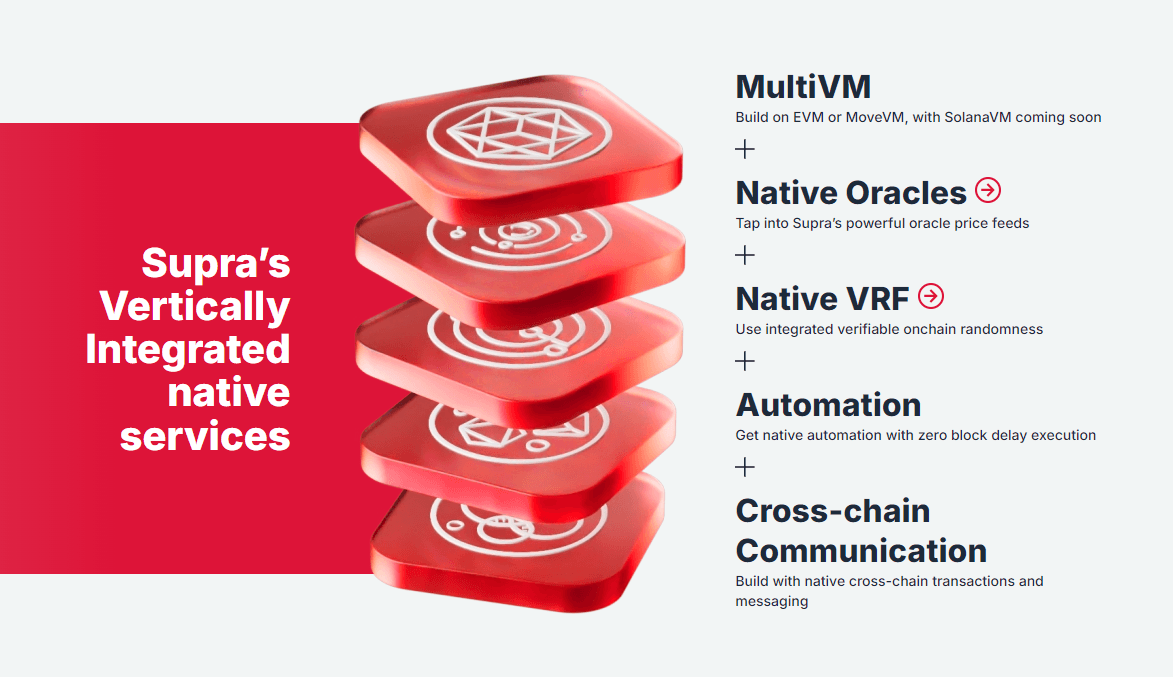
Supra Network Use Cases
Supra is designed from the ground up to support optimized Super dApps (dApps utilizing more than one prominent feature; i.e., oracles, dVRF etc.) on their own vertically integrated native Supra L1.
Notwithstanding, the solutions provided by Supra are already widely available, providing mission-critical information for DeFi applications and verifiable randomness for applications such as gaming, enterprise, and others.
Like most L1s focused on providing various infrastructure solutions, Supra’s services are designed to fulfill a host of use cases within a wide range of Web3 sectors. Some of these include:
- Gaming and NFTs
- DeFi
- Enterprise solutions
- Cross-chain digital identity aggregation: By combining Supra’s oracle and bridge infrastructure, it is possible to provide solutions focused on the management and verification of virtual identities across multiple blockchain networks via a single entry point.
Resources
The information provided by DAIC, including but not limited to research, analysis, data, or other content, is offered solely for informational purposes and does not constitute investment advice, financial advice, trading advice, or any other type of advice. DAIC does not recommend the purchase, sale, or holding of any cryptocurrency or other investment.
